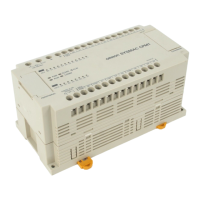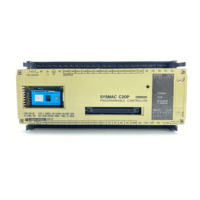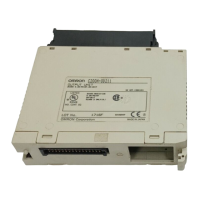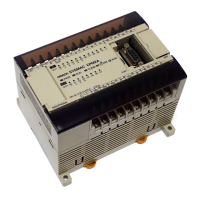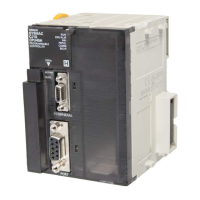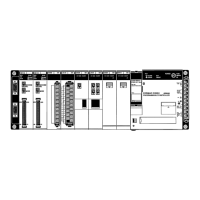597
Glossary
action In SFC programs, the individual executable elements in an action block. An ac-
tion can be defined either as a ladder diagram or as a single bit in memory.
Action Area A memory area that contains flags that indicate when actions are active.
action block A collection of all the actions for a single step in an SFC program. Each action is
accompanied by its action qualifier, set value, and feedback variable.
action number A number assigned to an action. Each action has a unique number. These num-
bers are used to access and to control the status of the action.
action program A ladder diagram program written to define an action.
action qualifier A designation made for a action to control when the action is to be executed in
respect to the status of the step.
active status One of the two main statuses that a step can be in. Active status includes pause,
halt, and execute status.
active step A step that is in either pause, halt, or execute status. There can be more than one
active step.
address A number used to identify the location of data or programming instructions in
memory or to identify the location of a network or a unit in a network.
advanced instruction An instruction input with a function code that handles data processing opera-
tions within ladder diagrams, as opposed to a basic instruction, which makes up
the fundamental portion of a ladder diagram.
allocation The process by which the PC assigns certain bits or words in memory for various
functions. This includes pairing I/O bits to I/O points on Units.
analog Something that represents or can process a continuous range of values as op-
posed to values that can be represented in distinct increments. Something that
represents or can process values represented in distinct increments is called
digital.
Analog I/O Unit I/O Units that convert I/O between analog and digital values. An Analog Input
Input converts an analog input to a digital value for processing by the PC. An
Analog Output Unit converts a digital value to an analog output.
AND A logic operation whereby the result is true if and only if both premises are true.
In ladder-diagram programming the premises are usually ON/OFF states of bits
or the logical combination of such states called execution conditions.
AQ See
action qualifier
.
area See
data area
and
memory area
.
area prefix A one or two letter prefix used to identify a memory area in the PC. All memory
areas except the CIO area require prefixes to identify addresses in them.
arithmetic shift A shift operation wherein the carry flag is included in the shift.
